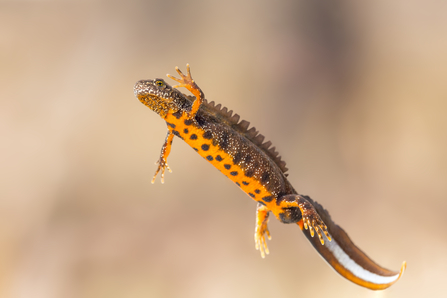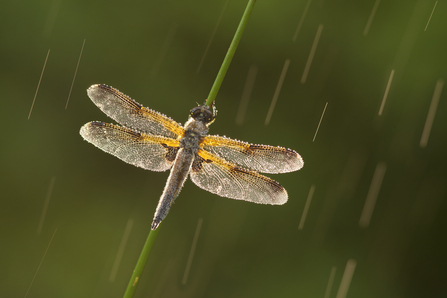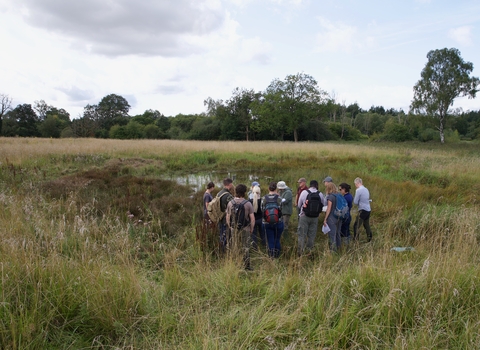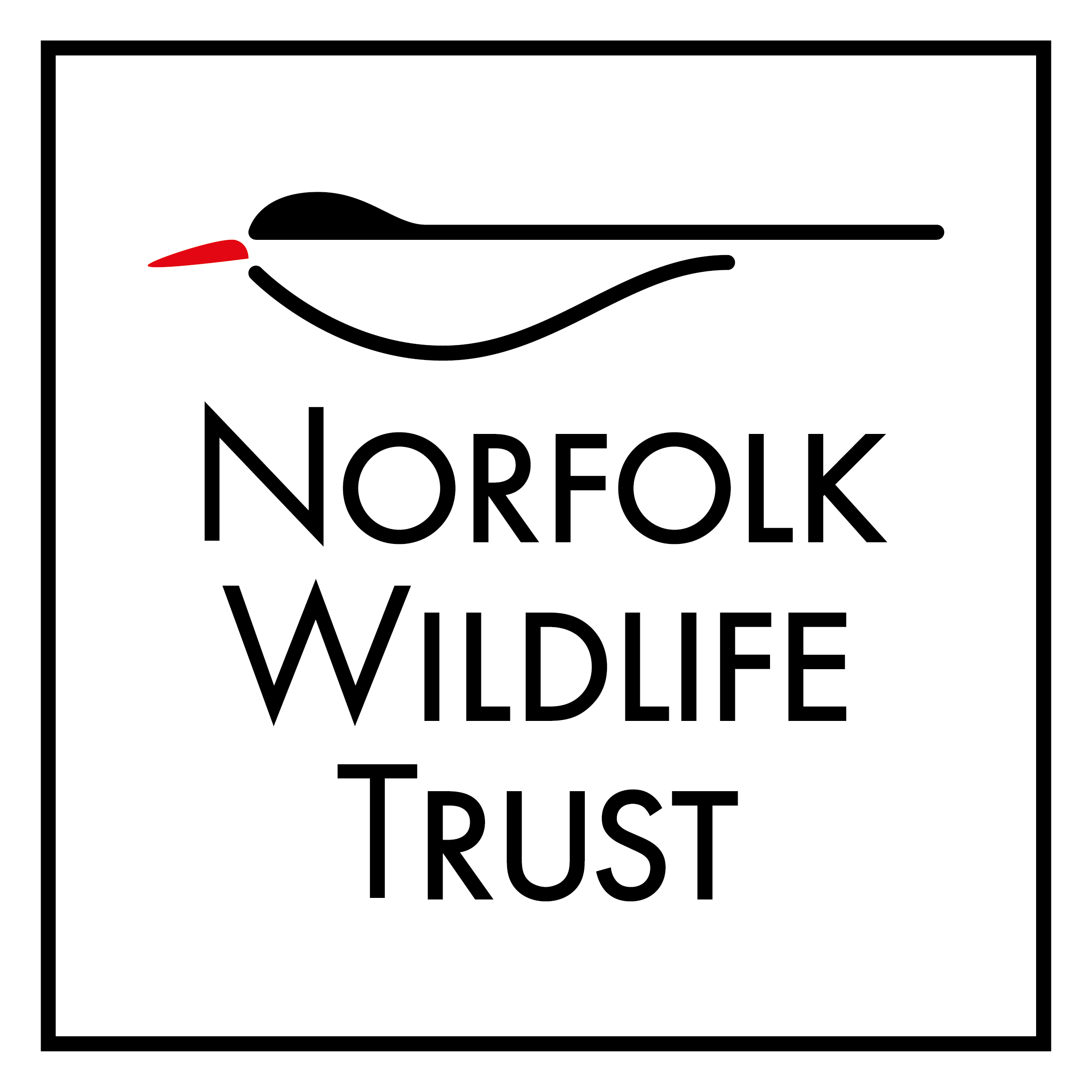Most ponds are man-made features, but in the Brecks there are some truly ancient ponds and depressions, often known collectively as ‘pingos’, which originated through natural glacial processes at the end of the last Ice Age, over 10,000 years ago. ‘Ghost’ pingos are pingos that have been filled in by humans, normally to facilitate larger scale agricultural production.
University College London (UCL), Norfolk Geodiversity Partnership and the Norfolk Ponds Project have been working with us to locate and re-excavate buried pingo ponds hidden beneath farmland. The project was part of the Brecks Fen Edge and Rivers Landscape Partnership scheme, funded by the National Lottery Heritage Fund.
The restoration work has sparked an astonishing revival of wetland biodiversity. Dormant seeds preserved in sediment layers have germinated, bringing back a variety of aquatic plants. In just two years, over 90 wetland plant species have emerged, including the rare and internationally significant fen pondweed, various-leaved pondweed, and lesser bearded stonewort. Remarkably, nine of the excavated ghost pingos now qualify for Priority Habitat Status due to their exceptional ecological value.
The ponds have also become havens for wildlife, hosting 50 species of water beetles—15 of conservation concern—as well as common frogs, toads, great crested newts and grass snakes.

Great crested newt (credit: Shutterstock)
A key outcome of the work has been the creation of a ‘blueprint’ for pingo restoration – detailed instructions setting out the science behind restoring lost ponds so that others can play their part in restoring these unique periglacial features.
Using advanced mapping techniques and onsite investigations, the team located and re-excavated 15 buried pingos – 11 on Watering Farm, adjacent to Thompson Common nature reserve and four on privately owned sites nearby.
Jon Preston, our Nature Conservation Manager, said: ‘Within the valley of Thompson Common, there are lots of pingos that have been lost over time, so it’s fantastic to be working with partners to find and restore them, as well as revealing the science behind successful restoration. Every pingo we uncover here boosts the size and quality of NWT Thompson Common nature reserve, providing bigger, better and more joined up habitat.’

Four-spotted chaser (credit: Guy Edwardes)
Professors Helene Burningham and Carl Sayer from UCL, said: ‘The amount of life we have found in the restored pingo ponds after just a couple of years is phenomenal. We think we are seeing one of the world’s most successful ecological restoration techniques unfold and reveal its true potential. As we have gone along, we have learnt how to best reveal the ponds by a careful step-by-step excavation process. If you can find and expose the old store of seeds of lost wetlands, all sorts of rare plants species can recover and with the plants comes the habitat for a vast array of other creatures. Resurrecting ghost ponds is astonishing in terms of what it can achieve for freshwater wildlife.’
Tim Holt-Wilson of the Norfolk Geodiversity Partnership, added: ‘This has been a rare and marvellous opportunity to investigate pond sediments which settled out over thousands of years. A star find was a log with possible tool marks which we dated to 1350 BC using radiocarbon analysis – that means the early middle Bronze Age. Deeper down, some of the patterns in the chalky pond basement layers must have been made by ground ice 12,000 years ago, at the end of the last Ice Age.’

Ghost pingo excavation (credit: Jimmy King)



